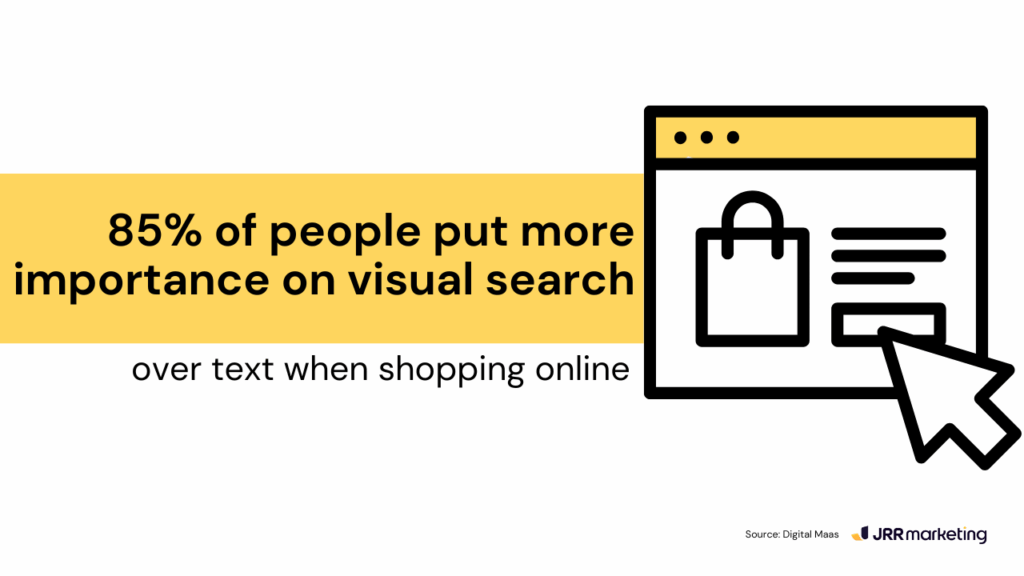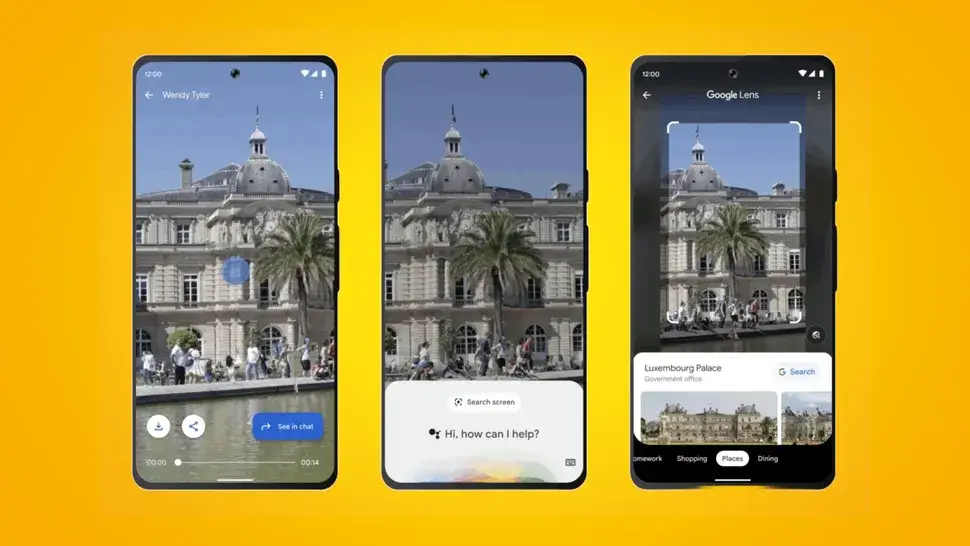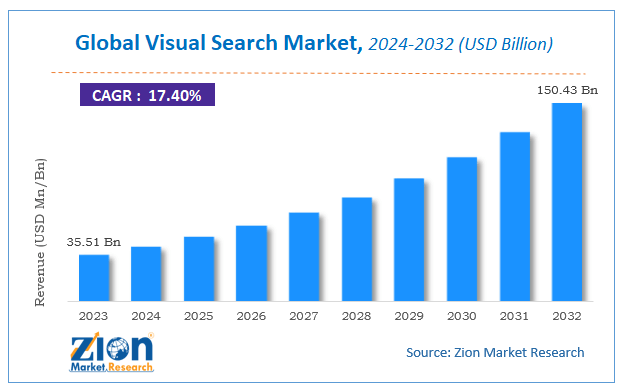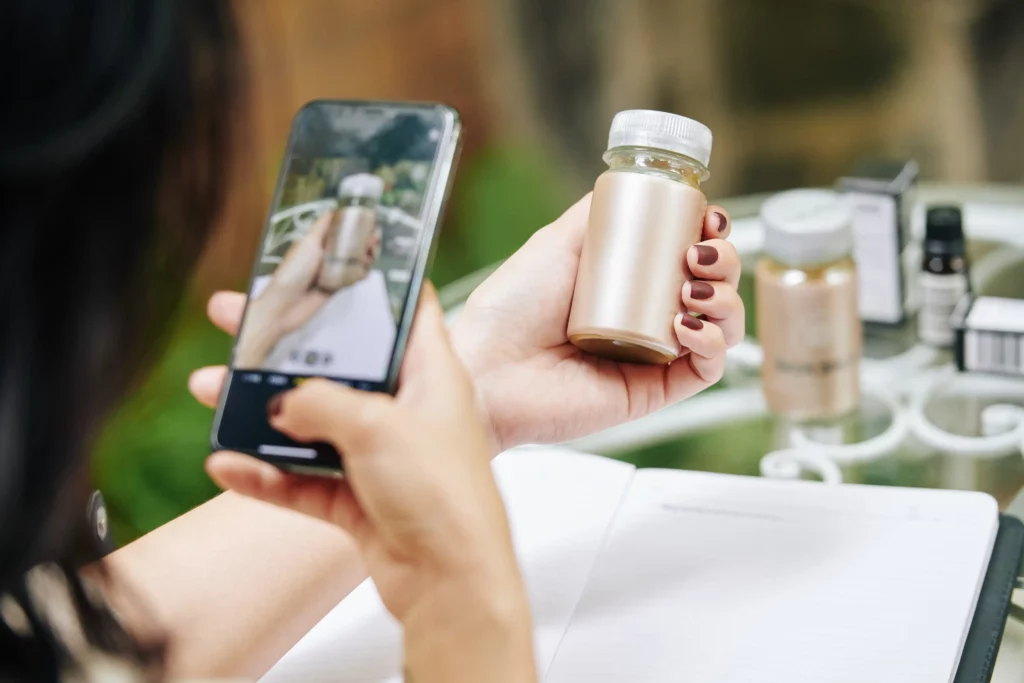Key takeaways
- Visual search is already integrated into the way people shop on Google, Pinterest, TikTok, and more. If your images aren’t ready, you’re not showing up.
- It’s a strong signal of buying intent. People using visual search often know exactly what they want. That means faster decisions and higher conversions.
- Most businesses still haven’t optimised for it. This gives you a rare head start. Start with your top products and get them visual-search ready now.
Plenty of people take screenshots just to Google them later.
That’s a visual search.
It’s when people use pictures instead of words to get more information on something.
They might snap a photo, scan a product, or upload a screenshot.
And they’re doing it more than ever.
Google gets 20 billion Lens searches every month.
And 4 billion of those are just for shopping.
Amazon also lets people search products by just pointing their camera.
It’s fast, easy, and intuitive.
But most brands are still sleeping on it.
They’re spending all their time writing for SEO.
People are out there showing search engines exactly what they want to buy.
And you should be ready for this shift.
Here are 5 compelling reasons to take visual search seriously, plus easy ways to make your content ready for it now.
#1 — It’s how Gen Z shops without having to type
Gen Z doesn’t search the way older generations do.
They snap, tap, and scroll their way to what they want.
And they’re doing it on Instagram, TikTok, even on Pinterest.
Seven out of ten people who know about visual search say they’d use it.
And Gen Z and millennials are leading the way, with 72% already making heavy use of it.
People who search this way often already know what they want.
They don’t need convincing.
They’re just trying to track down what they’ve already decided they want.
For them, typing is clunky.
That’s why visual search is second nature.
To make the most of this, add structured data and ALT text to your product images.
That way, platforms like Google can “see” your stuff.
And show it to the people who are looking, without having to type in any words.

#2 — Visual search shortens the buyer journey
You don’t have to guess the right keywords anymore.
Search engines can now figure it out from a photo.
People just take a photo and boom, there it is.
It’s less annoying to find something this way.
And that means they’re more likely to buy.
Because by the time they’re using visual search, they already know what they want.
That makes it one of the strongest signals of buying intent online.
So, check your product images.
They need to be high-quality, without shadows or weird crops..Make sure they’re sharp, clear, and labelled with (again) proper ALT text.
Be specific, like how a person would describe it out loud.
Don’t go with default names like “IMG_0372.jpg.”
Add filenames that describe what’s in the image.
Use short, simple filenames like “tan-suede-ankle-boots.jpg.”
It helps search engines understand what your image shows.
Also, use structured data so platforms know it’s a product.
This makes your stuff more likely to show up in visual results.
The easier it is for tech to read your images, the easier it is for people to find your products.

#3 — Visual search plays nicely with SEO
Visual search isn’t just about what looks good.
It’s part of how Google ranks your products especially on mobile, where images take over the results.
If your products show up in “related images” or “visually similar items,” that’s a free traffic stream.
Truth is, images can do the heavy lifting.
But most people treat images like decoration.
They upload massive files with junky names like “final-final-banner-V2.jpg.”
They lazy-load everything and end up hiding their content from Google’s bots.
And then wonder why their stuff never shows up.
Aside from all the optimisation we’ve mentioned above, use schema markup.
Product, ImageObject, all of it.
That helps Google know it’s something worth showing in search.
And double check your image loading.
If your images only appear after someone scrolls or clicks, Google might miss them completely.
Doing visual SEO is just doing what you’re already doing, but going the extra mile to make it right.

#4 — Your competitors haven’t done it yet
Most businesses haven’t even begun to touch visual search.
Their images are still blurry, unlabelled, and buried under popups.
This gives you an edge, if you move now.
The platforms favour early movers.
When your product shows up first in visual results, it stays there.
And once you’ve got that visibility, it’s hard for others to push you out.
Test your own stuff with Google Lens and Pinterest Lens.
Open the app.
Scan your product.
See what shows up.
Is it your product or your competitor’s?
Or maybe something random from Etsy?
Remember, search engines want detail.
They want to know everything about your product.
And not just what it is.
Show your product in context.
Not just on a white background.
Search tools are getting better at understanding scenes.
So if you’re selling a sofa, show it in a living room.
It helps the algorithm figure out when and where your product is useful.
And that means it shows up for more types of searches.
Google uses Product schema and ImageObject markup to understand what’s in your images and when to show them.
Use Google’s free Structured Data Markup Helper.
It’s copy-paste simple.
Once your product pages include this info, AI tools can index and display your items faster and more accurately.
This means you show up more often and in front of the right people.
#5 – Visual search is everywhere now, even when you don’t notice it
Most people just tap a product in a video.
Or scan something they saw in a shop.
Some phones allow you to hold your finger to an image to find similar ones.
It’s not a separate feature anymore.
This is built into the way people shop and explore online.
Google Lens works seamlessly with Android cameras and the Chrome app.
Pinterest shows “visual matches” under nearly every pin.
TikTok lets people shop directly from videos using product tags and image recognition.
Amazon’s camera lets people search without typing a word.
Even Instagram uses visual data to power product tags and recommendations.
This is the default for younger shoppers and it’s spreading fast.
People expect to discover products without searching the old way.
If your content doesn’t show up in those systems, you’re missing out on how online shopping works today.
So, make your images work better on the platforms people already use.
Start by compressing them.
Use tools like TinyPNG or ImageOptim to shrink file sizes without losing quality.
Stick to square or vertical formats.
These fill more space in mobile feeds.
And check how your images look on small screens.
If the product blends into the background or the lighting’s off, fix it.If possible, avoid text overlays and clutter.
They confuse visual search tools and make it harder to match products.
Visual search is the future for SEO
Products and services are being discovered, compared, and bought without ever typing a word.
If your images aren’t ready, you won’t get seen.
You need to be findable in a world that’s shifting to visuals first.
Choose a few high-impact products to test with.
Check how they appear in Google Lens.
Test them on mobile.
That one change can unlock more reach without writing more content or spending more on ads.
The brands that get ahead here won’t be the loudest.
They’ll be the ones who quietly made their content easier to see, search, and shop.
So, be visible when it counts.
Speak the language machines understand.
Because soon, snapping a photo will be how we all shop.
And the question is, will your products be in those results?


